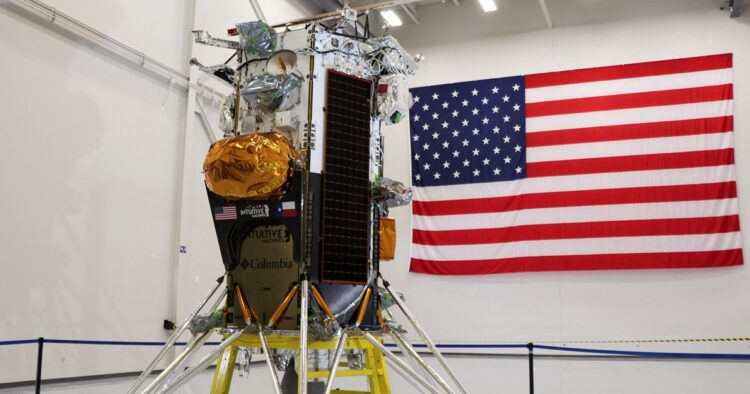A Houston-based aerospace company, Intuitive Machines, successfully launched its Nova-C lander, nicknamed Odysseus, on a mission to achieve the first U.S. lunar touchdown in over 50 years. This marks a historic moment as it’s also the first lunar landing by a privately owned spacecraft. The liftoff occurred from NASA’s Kennedy Space Center in Cape Canaveral atop a Falcon 9 rocket provided by Elon Musk’s SpaceX.
The Nova-C lander, a hexagonal cylinder with four legs, carries six NASA payloads designed to collect crucial data about the lunar environment. Despite being an Intuitive Machines mission, this collaboration with NASA emphasizes the increasing reliance on private companies for space exploration.
The launch faced a brief delay due to irregular temperatures detected in the liquid methane used for the lander’s propulsion system. However, SpaceX swiftly resolved the issue, ensuring a successful liftoff.
In the backdrop of recent challenges faced by private lunar landers, including a propulsion system leak from Astrobotic Technology’s Peregrine lander, Intuitive Machines’ mission aims to achieve a “soft landing” at crater Malapert A near the moon’s south pole. This success would mark the first controlled descent to the lunar surface by a U.S. spacecraft since the Apollo missions.
The Nova-C vehicle is set to reach its destination on February 22 after a weeklong flight. If successful, this mission would not only be a significant achievement for Intuitive Machines but also a crucial step in NASA’s Artemis moon program, racing against China’s plans for crewed lunar missions.
NASA’s strategy of leveraging private companies for spacecraft, like Nova-C, is a cost-effective approach to advance its space exploration goals. In contrast to the Apollo era, where NASA owned and operated the technology, the Artemis missions prioritize collaboration with the commercial sector.
The significance of this mission extends beyond lunar exploration, aligning with NASA’s broader goals of human exploration of Mars. With the Artemis program, small landers like Nova-C play a pivotal role in surveying the lunar landscape, studying resources, and identifying potential hazards.
As the United States faces delays in its Artemis moon landing schedule, with a shift from 2025 to late 2026, the collaboration with private entities becomes increasingly crucial. China, a major contender in space exploration, has set its sights on a crewed lunar landing by 2030.
Looking ahead, Intuitive Machines has plans for future lunar missions, including IM-2 scheduled for a 2024 landing at the lunar south pole and IM-3 later in the year featuring small rovers. These missions aim to build on the success of Nova-C, further advancing our understanding of the moon’s surface and its potential for future exploration.

















Comments